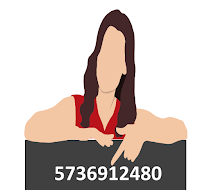What was the challenge?
Take a look at the clues given for identifying the number ABCDEFGHIJ.
-------------------------------------------------------------------------------
1) A + B + C + D + E is a multiple of 6.
2) F + G + H + I + J is a multiple of 5.
3) A + C + E + G + I is a multiple of 9.
4) B + D + F + H + J is a multiple of 2.
5) AB is a multiple of 3.
6) CD is a multiple of 4.
7) EF is a multiple of 7.
8) GH is a multiple of 8.
9) IJ is a multiple of 10.
10) FE, HC, and JA are all prime numbers.
-------------------------------------------------------------------------------
STEPS :
-------------------------------------------------------------------------------
STEP 1 : Since, the digits in number ABCDEFGHIJ are from 0 to 9 with no repeat, the sum of all digits must be 0 + 1 + .....+ 9 = 45.
-------------------------------------------------------------------------------
STEP 2 : In first 2 conditions, it's clear that all digits of mystery number are added i.e. from A to J. However, addition of first 5 digits is multiple of 6 and addition of rest of digits is multiple of 5.
That means the total addition of 45 must be divided into 2 parts such that one is multiple of 6 & other is multiple of 5.
30 and 45 is only pair that can satisfy these conditions. Hence,
A + B + C + D + E = 30.
F + G + H + I + J = 15.
-------------------------------------------------------------------------------
STEP 3 : In next 2 conditions, sums of digits at odd positions and even positions are listed. Moreover, the sum of digits at odd positions has to be multiple of 9 & that of at even positions need to be multiple of 2.
So again, the total addition of 45 must be divided into 2 parts such that one is multiple of 9 & other is multiple of 2.
The only pair to get these conditions true is 27 and 18. Hence,
A + C + E + G + I = 27.
B + D + F + H + J = 18.
-------------------------------------------------------------------------------
STEP 4 : As per condition 9, IJ is multiple of 10. For that, J has to be 0 and with that now 0 can't be anywhere else. J = 0.
-------------------------------------------------------------------------------
STEP 5 : Since, one digit can be used only once, numbers like 11, 22, 33....are eliminated straightaway.
-------------------------------------------------------------------------------
STEP 6 : As per condition 10, JA is prime number. With J = 0, for JA to be prime number, A = 2, 3, 5, 7.
-------------------------------------------------------------------------------
STEP 7 : As per condition 5, AB is a multiple of 3.
Let's list out possible value of AB without any 0, possible digits of A = 2, 3, 5, 7 and excluding numbers having 2 same digits as -
21, 24, 27, 36, 39, 51, 54, 57, 72, 75, 78.
-------------------------------------------------------------------------------
STEP 8 : For numbers FE and HC to be prime (as per condition 10), C and E can't be 0, 5 or even.
-------------------------------------------------------------------------------
STEP 9 : As per condition 6, CD is multiple of 4 and as per condition 8, GH is multiple of 8. So, D and H has to be even digits.
-------------------------------------------------------------------------------
STEP 10 : As per condition 6, CD is a multiple of 4. So the possible values of CD without 0, with C not equal to 5 and with odd C, even D -
12, 16, 32, 36, 72, 76, 92, 96.
-------------------------------------------------------------------------------
STEP 11 : As deduced in STEP 3 , B + D + F + H + J = 18.
With J = 0 and D, H as even digits (STEP 9), both B and F has to odd or even to get to the even total of 18.
If both of them are even then the total of
B + D + F + H + J = 2 + 4 + 6 + 8 + 0 = 20.
which is against our deduction.
Hence, B and F must be odd numbers.
-------------------------------------------------------------------------------
STEP 12 : So, possible values of AB deduced in STEP 7 are revised with odd B as -
21, 27, 39, 51, 57, 75.
-------------------------------------------------------------------------------
STEP 13 : As per condition 7, EF is a multiple of 7. With F as odd (STEP 11), along with E as odd, not equal to 5 (STEP - 8), possible value of EF are -
21, 49, 63, 91.
-------------------------------------------------------------------------------
STEP 14 : But as per condition 10, FE is PRIME number. Hence, the only possible value of EF from above step is 91. SO, E = 9 and F = 1.
-------------------------------------------------------------------------------
STEP 15 : Now after 1 and 9 already taken by F and E, possible value of AB in STEP 12 are again revised as - 27, 57, 75. And it's clear that either A or B takes digit 7. So 7 can't be used further.
-------------------------------------------------------------------------------
STEP 16 : So after 7 taken by A or B, E = 9, F = 1 possible values of CD deduced in STEP 10 are revised as - 32, 36. Hence, C = 3.
-------------------------------------------------------------------------------
STEP 17 : With AB = 27, CD can't be 32. And if AB = 27, CD = 36 then,
A + B + C + D + E = 2 + 7 + 3 + 6 + D + 1 = 30.
D = 13.
This value of D is impossible.
Moreover, if CD = 32 and AB = 75 or 57,
A + B + C + D + E = 5 + 7 + 3 + 2 + D + 1 = 30.
D = 12.
Again, this value of D is invalid.
Hence, CD = 36 i.e. C = 3 and D = 6 and AB = 57 or 75 but not 27.
-------------------------------------------------------------------------------
STEP 18 : With AB = 57 or 75, CD = 36, EF = 91, J = 0, possible values of GH which is multiple of 8 (condition 8) are - 24, 48.
That means either G or H takes 4. Or G is either 2 or 4.
-------------------------------------------------------------------------------
STEP 19 : Now as deduced in STEP 3,
A + C + E + G + I = 27.
A + 3 + 9 + G + I = 27
A + G + I = 15.
The letter G must be either 2 or 4 and A may be 5 or 7.
If A = 5, G = 4 then I = 6
If A = 7, G = 2 then I = 6
But we have D = 6 already, hence both of above are invalid.
If A = 7, G = 4 then I = 4.
Again, this is invalid as 2 letters G and I taking same digit 4.
Hence, A = 5, G = 2 is only valid combination thereby giving I = 8.
-------------------------------------------------------------------------------
STEP 20 :
If A = 5, then B = 7 ( STEP 17 ).
C = 3, D = 6 ( STEP 17 ).
E = 9, F = 1 ( STEP 14).
If G = 2, then H = 4 ( STEP 18 & 19).
I = 8 (STEP 19), J = 0 ( STEP 4).
-------------------------------------------------------------------------------
CONCLUSION :
Hence, the mystery number
ABCDEFGHI is
5736912480.
In the end, just to verify if the number that we have deduced is following all given conditions,
1) 5 + 7 + 3 + 6 + 9 = 30 is a multiple of 6.
2) 1 + 2 + 4 + 8 + 0 = 15 is a multiple of 5.
3) 5 + 3 + 9 + 2 + 8 = 27 is a multiple of 9.
4) 7 + 6 + 1 + 4 + 0 = 18 is a multiple of 2.
5) 57 is a multiple of 3.
6) 36 is a multiple of 4.
7) 91 is a multiple of 7.
8) 24 is a multiple of 8.
9) 80 is a multiple of 10.
10) 19, 43, and 05 are prime numbers.





